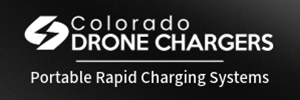Robert Prior
Well-Known Member
Shoot the panoramas. Used do it in DNG but now JPEG because devignetting is done for me that way500I'd be curious about the full workflow for this, including the tools you are using. Love the Iceland and Greenland shots.
Aperture 5.6, shutter speeds 1/4000, 1/1000, 1/250, 1/60 or 1/30, 1/125, 1/500, 1/2000 (depends on light and scene).
Import everything into PTGUI Pro. Let it auto-align then manually add points for every image it can't handle. Manually add and delete points until I get a reasonable stitch. This usually involves deleting points in clouds (which move too much between images). Time spent here is well worth it in fewer problems to fix later. Straighten horizon if necessary. Use masking if necessary to handle obvious issues. Export as TIF images, highest resolution. Projection is equirectangular, obviously.
In Affinity Photo fill in the missing sky for each image with a solid colour picked from the sky about 90° from the sun. Export again.
In Photomatix, process as a 360° image using tone-mapping, usually set to as natural as possible without losing detail. Apply moderate deghosting. Export as 16-bit TIF.
Run a copy of the TIF through Colour Efex and apply a touch of detail-enhancing and tonal contrast to sharpen the edges.
Import both images into Affinity Photo, unmodified image on the bottom. Mask out the Colour Efex enhancements in the sky, and adjust the transparency of that layer by eye so that the ground looks a bit sharper but not overprocessed. (Still working on this — I tend to overprocess.)
Flatten image and use the equirectangular mode in Affinity Photo to edit the nadir if necessary. Use the inpainting brush to blend the sky (the bits that were just one colour) so that it (hopefully) looks natural. If necessary, add a sun in the image using luminosity blending. Carefully inspect the entire image for ghosting, and fix. Edit out things like myself, cars and people I don't want, etc. Go back to the entire image and again carefully inspect it for more things to fix.
When finished, export as a 16-bit TIF.
Takes 2-3 hours for the sunrise/sunset panoramas, which I generally find relaxing.
Panoramas shot in gusty conditions are worse, as the aircraft moves enough that parallax errors abound and it can be quite frustrating trying to minimize them when stitching, then editing them out afterwards.
Panoramas shot in mid-day are easier, as I don't need as many exposures (sometimes just one) so not only are there fewer images but fewer opportunities for errors/motion to creep in. Half and hour to an hour for those.
Would be faster if I had a faster computer.











